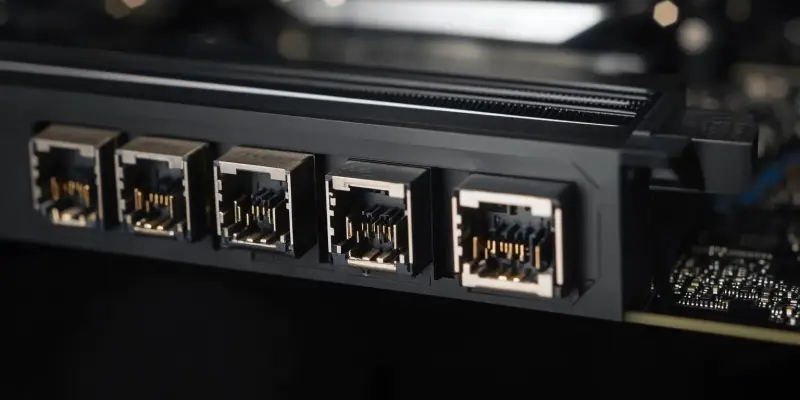The buzzing question on everyone’s mind is whether you really need the full 4x 8-pin connectors for optimal performance with NVIDIA’s new GeForce RTX 5090 graphics card. Recent analyses and tests, such as those conducted by ComputerBase, have provided a clear perspective on the issue. When gamers and tech enthusiasts invest in a high-end GPU like the RTX 5090, they expect top-notch performance without compromise. However, it’s crucial to understand the power requirements to maximize the capabilities of this cutting-edge hardware.
Power Configurations and Performance Impact
Investigations reveal that using only 3x 8-pin connectors results in a significant performance drop, specifically around 5% during rasterized tests. This performance dip is primarily due to a 100W power deficit, preventing the GPU from reaching its full potential. When the RTX 5090 operates under the recommended 4x 8-pin power connector setup, the total potential power supply reaches up to 600W. This level of power is crucial for power-intensive variants like the ROG Astral GeForce RTX 5090. Tests conducted at various TDP levels, 575W, 450W, and 400W, all corroborated this finding, clearly demonstrating that lower power supply configurations do impact performance adversely.
Crucially, it’s important to note that the GPU fails to function with merely 2x 8-pin connectors. This setup leaves the GPU attempting to operate on a mere 300W, which is insufficient for proper operation. This limitation underscores the necessity for at least 3x 8-pin connectors to ensure the card powers up, let alone performs optimally. Therefore, to achieve the best performance from the RTX 5090 and to prevent an underwhelming gaming or computing experience, adhering to the recommended power configuration is imperative.
Addressing Future Complications
The question of whether four 8-pin connectors are truly necessary stems from concerns over power delivery and performance enhancement. Understanding the power requirements is essential to maximize the capabilities of this advanced piece of hardware. Using the full set of connectors might seem excessive, but for those looking to push their systems to the limit, ensuring sufficient and stable power flow can make all the difference. It’s a topic worth serious consideration for anyone wanting to get the most out of their new GPU and ensure it operates at peak performance levels consistently. Therefore, being aware of these details can help users make informed choices about their hardware setups.

